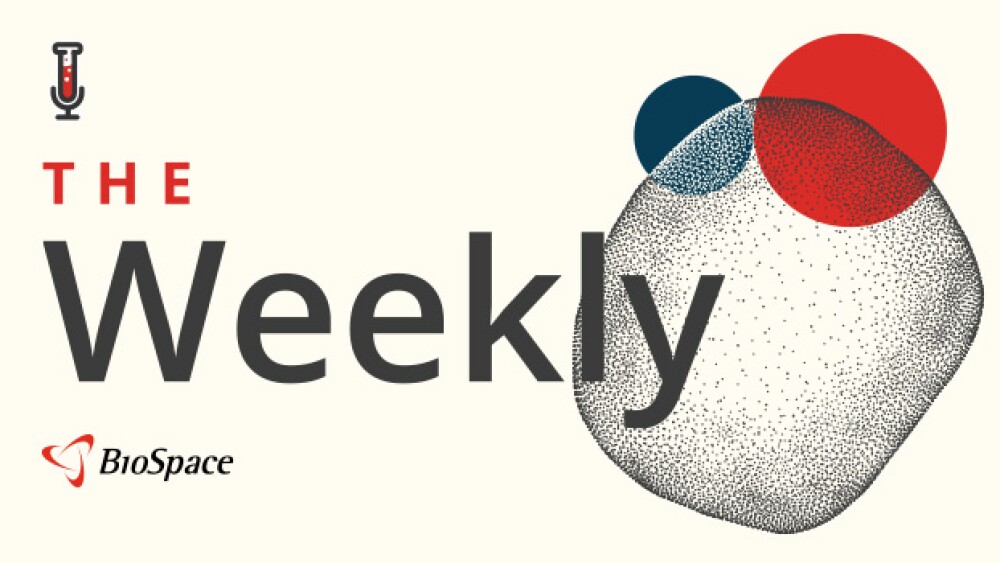Scilex Pharmaceuticals Inc. (Scilex), a subsidiary of Sorrento Therapeutics, Inc. (NASDAQ: SRNE) (Sorrento), today announced data showing ZTlido™ (lidocaine topical system) 1.8% (ZTlido) demonstrated a statistically significant improved adhesion profile compared to Lidoderm® (lidocaine patch 5%) (Lidoderm) and Versatis® (Medicated Plaster 5%) (Versatis)
|
SAN DIEGO, /PRNewswire/ -- Scilex Pharmaceuticals Inc. (Scilex), a subsidiary of Sorrento Therapeutics, Inc. (NASDAQ: SRNE) (Sorrento), today announced data showing ZTlido™ (lidocaine topical system) 1.8% (ZTlido) demonstrated a statistically significant improved adhesion profile compared to Lidoderm® (lidocaine patch 5%) (Lidoderm) and Versatis® (Medicated Plaster 5%) (Versatis)1. In a separate study, ZTlido was found to be bioequivalent to Lidoderm2. The presentation of results at PAINWeek 2018 in Las Vegas, September 4-8, followed U.S. Food and Drug Administration (FDA) approval in February for the relief of pain associated with post-herpetic neuralgia (PHN). ZTLIDO will be commercially available in October. "Skin adhesion is important for the effectiveness of topical patches and systems, and these findings further establish ZTlido as a promising new treatment option for PHN," said Jeff Gudin, M.D., Director, Pain Management and Palliative Care, Englewood Hospital and Medical Center. "We also found that while lidocaine topical patches and systems are a recommended non-opioid first-line therapy, they remain underutilized in clinical practice." ZTlido is a new topical product that uses an advanced adhesion technology providing more efficient lidocaine delivery than Lidoderm® over a full 12 hours. PHN, also referred to as post-shingles pain, is a frequent complication of shingles, a condition caused by the herpes zoster (HZ) virus4. "The results of these studies reinforce the value of ZTlido as a first-line, non-opioid therapy for this difficult-to-treat condition," said William Pedranti, President of Operations for Scilex. "We are thrilled with the data and will continue to explore additional indications as well as using the underlying technology platform for other active pharmaceutical ingredients." Information on the Three Posters presented at PAINWeek®: Adhesion Performance of ZTlido, Lidoderm and Versatis The adhesion performance of ZTlido, Lidoderm and Versatis was assessed in an open-label, three-period, single-application study in 47 healthy adults over a 12-hour dosing period. In the primary endpoint analysis, ZTlido demonstrated statistically significant superior percent adhesion at all time points, including at Time 0 immediately after application, compared to Lidoderm in the 44 subjects who completed the study1. A significantly larger number of ZTlido subjects were able to maintain ≥90% adhesion (FDA score 0: essentially no lift off the skin) at 12 hours post-application time point (33/44 subjects, 75.0%) compared to Lidoderm (6/44 subjects, 13.6%), one of the study's secondary endpoints1. ZTlido and Lidoderm were well-tolerated with no observed adverse events during the study1. Pharmacokinetics of ZTlido and Lidoderm A single-center, randomized, comparative Phase 1 study in 54 healthy adult subjects was conducted to characterize and compare the single-dose pharmacokinetics (PK) of ZTlido and Lidoderm2. Overall, PK bioequivalence was demonstrated between ZTlido and Lidoderm, based on the PK parameters of AUC and Cmax2. Treatment Patterns and Medication Use in Patients with PHN A retrospective analysis of medical and pharmacy claims data from the Truven Health MarketScan® 2010 to 2014 Commercial Claims and Encounters and Medicare Supplemental and Coordination of Benefits Databases was conducted to explore treatment patterns associated with PHN and characterize healthcare utilization and expenditure associated with PHN diagnosis and treatment3. The analysis found that recommended first-line treatments were underutilized in PHN patients. Only 29% of diagnosed patients were started on recommended first-line therapies, including lidocaine patch (8%), gabapentin (15%), pregabalin (3%), or tricyclic antidepressants (2%)3. Notably, 22% of patients were started on (non-first-line) opioids, while 9% started on nonsteroidal anti-inflammatory drugs (NSAIDS), which are not recommended by neuropathic treatment guidelines3. Opioids (22%) and gabapentin (15%) were the most common initial treatments in both age groups3. In younger patients, NSAIDs were used prior to first or second-line treatment more frequently (11% of patients <65 versus 6% of patients ≥65? p<0.001)3. About ZTlido™ (lidocaine topical system 1.8%) Indication ZTLIDO is indicated for relief of pain associated with post-herpetic neuralgia (PHN). Important Safety Information Contraindications ZTLIDO is contraindicated in patients with a known history of sensitivity to local anesthetics of the amide type, or to any other component of the product. Warnings and Precautions Accidental exposure can occur even after a ZTLIDO patch has been used. Small children or pets could suffer serious adverse effects from chewing or ingesting a new or used ZTLIDO patch. Store and dispose of patches properly and keep out of reach of children and pets. Excessive dosing or overexposure to lidocaine can occur. Longer duration of application, application of more than the recommended number of patches, smaller patients, or impaired elimination may all contribute to increased blood concentration levels of lidocaine. If lidocaine overdose is suspected, check drug blood concentration. Management of overdose includes close monitoring, supportive care, and symptomatic treatment. Application site reactions can occur during or immediately after treatment with ZTLIDO. This may include development of blisters, bruising, burning sensation, depigmentation, dermatitis, discoloration, edema, erythema, exfoliation, irritation, papules, petechia, pruritus, vesicles, or may be the locus of abnormal sensation. These reactions are generally mild and transient, resolving spontaneously within a few minutes to hours. Inform patients of these potential reactions and that severe skin irritation may occur with ZTLIDO if applied for a longer period than instructed. Hypersensitivity cross-reactions may be possible for patients allergic to PABA derivatives. Manage hypersensitivity reactions by conventional means. Eye exposure with ZTLIDO should be avoided. If eye contact occurs, immediately wash out the eye with water or saline and protect the eye (eg, eye glasses/eye wear) until sensation returns. Adverse Reactions Use in Specific Populations To report SUSPECTED ADVERSE REACTIONS, contact SCILEX Pharmaceuticals Inc. at 1-866-SCILEX3 or FDA at 1-800-FDA-1088 or www.fda.gov/medwatch. For full Prescribing Information, please visit www.ztlido.com. About Scilex Pharmaceuticals Inc. Scilex, a majority-owned subsidiary of Sorrento located in San Diego, California, leverages on its core, proprietary technologies to responsibly develop next generation, branded pharmaceutical products to better manage critical conditions and maximize the quality of life of patients and healthcare providers. We are uncompromising in our focus to become the global pharmaceutical leader committed to social, environmental, economic, and ethical responsibility. Leveraging on our global partnerships, we deliver the next generation of trailblazing products that are responsible by design. The Company's product, ZTlido™ (lidocaine topical system) 1.8%, is a branded lidocaine topical system formulation for the treatment of relieving the pain of post-herpetic neuralgia, also referred to as after-shingles pain. For more information visit www.scilexpharma.com. About Sorrento Therapeutics, Inc. Sorrento is a clinical stage, antibody-centric, biopharmaceutical company developing new therapies to turn malignant cancers into manageable and possibly curable diseases. Sorrento's multimodal multipronged approach to fighting cancer is made possible by its extensive immuno-oncology platforms, including key assets such as fully human antibodies ("G-MAB™ library"), clinical stage immuno-cellular therapies ("CAR-T"), intracellular targeting antibodies ("iTAbs"), antibody-drug conjugates ("ADC"), and clinical stage oncolytic virus ("Sephrevir®"). Sorrento's commitment to life-enhancing therapies for cancer patients is also demonstrated by our effort to advance a first-in-class (TRPV1 agonist) non-opioid pain management small molecule in Resiniferatoxin ("RTX") and ZTlido. Resiniferatoxin is completing a phase IB trial in terminal cancer patients. For more information visit www.sorrentotherapeutics.com. Forward-Looking Statements Sorrento® and the Sorrento logo are registered trademarks of Sorrento Therapeutics, Inc. ZTlido™ and G-MAB™ are trademarks owned by Scilex Pharmaceuticals Inc., and Sorrento Therapeutics, Inc., respectively. Seprehvir® is a registered trademark of Virttu Biologics Limited, a wholly-owned subsidiary of TNK Therapeutics, Inc. and part of the group of companies owned by Sorrento Therapeutics, Inc. All other trademarks are the property of their respective owners. References
View original content:http://www.prnewswire.com/news-releases/scilex-presents-ztlido-data-on-superior-adhesion-over-lidocaine-patch-formulation-300708881.html SOURCE Scilex Pharmaceuticals Inc. |
||
Company Codes: NASDAQ-SMALL:SRNE |




